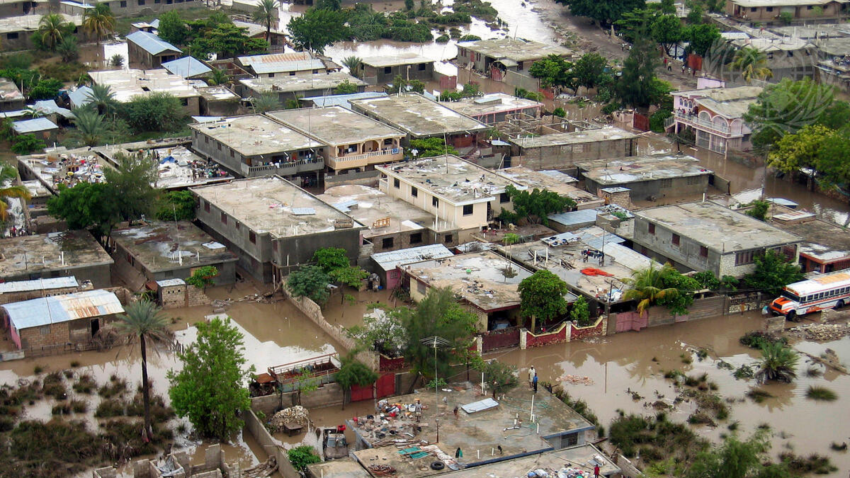This article was originally published in the Miami Herald.
By Selwin Hart, UN Assistant Secretary-General for Climate Action and Special Adviser to the UN Secretary-General
The climate crisis is here, and no continent, region or country is immune. Climate and weather-related disasters have increased six-fold over the past five decades, and as the 2021 Atlantic Hurricane Season approaches, the United States, and its neighbors in the Caribbean and Central America, will once again face the possibility that countless lives and livelihoods could be lost to a single storm.
The average global temperature for 2020 was an alarming 2.16°F (1.2°C) warmer than in the late 1800s, according to the World Meteorological Organization. This does not sound like much but is dangerously close to the 2.7°F (1.5°C) degree limit set out in the Paris Agreement to avert the worst impacts of climate change. Climate change is causing sea levels to rise, ocean surface temperatures to warm and moisture to build in the atmosphere. As a result, storms are more intense and far more destructive.
This coincides with the last five years being the hottest on record. 2020 was also a record year for billion-dollar weather and climate disaster events in the United States, with 22 events, and was the sixth consecutive year of 10 or more such events. Indeed, the 2020 season was exceptionally active, producing 30 named storms and 13 hurricanes. And the predictions for the 2021 Atlantic hurricane season are pointing to another potentially dangerous year.
I witnessed first-hand the devastation and destruction caused by Hurricane Dorian in the Bahamas in 2019. Towns were torn apart or washed away. Damage amounted to a quarter of that nation’s economy. The Inter- American Development Bank estimated this was the equivalent of the United States losing the combined economic output of Florida, California, and Texas.
Just last year, Hurricane Eta affected 7.1 million people in 10 countries, from Colombia to the United States, when it churned through the region in early November. Eta claimed 394 lives, hitting Honduras and Guatemala the hardest and resulting in over $5 billion in damage across Central America, and just two weeks later, Hurricane Iota caused an additional $1.3 billion in damage.
The reality is, whether you are in South Florida, Haiti, or Guatemala, it is the poor and vulnerable who are hardest hit.
The COVID-19 pandemic underscores the importance of understanding and planning for the potential disasters that may lie before us. If there is even a minimal chance that our community will be hit by a hurricane, shouldn’t we make every effort to make sure that our infrastructure and our people are more resilient?
The good news is that governments and businesses are increasingly committing to addressing the root causes of climate change. However, we should all be deeply concerned by the lack of attention to the impacts of climate change that are already a daily reality.
Tragically, many of the countries in Central America and the Caribbean simply do not have the economic wherewithal to build up their defenses and protect their people from disastrous climate impacts.
Following a year during which the pandemic dealt a crippling blow to economies across the region that depend on tourism, many national budgets are now at a breaking point. Add to this the high costs of servicing existing debt, and low capacity to tap into capital markets.
The triple crises of climate change, Covid-19 and debt threatens the stability, security and viability of economies and societies across our region. It is in the collective interests of all nations in the Western Hemisphere, especially the largest and wealthiest, to help small and climate-vulnerable nations build resilience to climate change and natural disasters.
To counter this triple crisis, greater investment is urgently needed in the region to build resilience. Like all investments – this would involve up-front costs and support from the international community, including debt relief and access to low-cost finance.
But these investments would be more than worth it – they would save lives and livelihoods, minimize damage and allow people, communities, countries, and economies to be prepared if a climate disaster threatens, and to recover much faster from a hit. In fact, it is estimated that for every dollar invested in climate resilient infrastructure, six dollars can be saved.
This is why United Nations Secretary-General António Guterres is calling for a major breakthrough to put climate-resilience needs front and center on the global agenda.
This includes asking the wealthier countries and the major international development banks to allocate at least half of their climate change program funds to helping developing countries adapt to climate change. This must be one of the top priority outcomes at the upcoming G7 Summit in the United Kingdom.
The United Nations estimates that current climate adaptation costs in developing world stand at $70 billion per year and are set to increase to as much as $300 billion a year by 2030 if action isn’t taken immediately.
We need to do much more, much faster. The lives and livelihoods of millions of people in the region are at stake. Inaction means massive costs that will ultimately be borne by taxpayers. But action now will deliver immense benefits to people in every country, every city and every state. This is a crisis. Let’s act like it.



